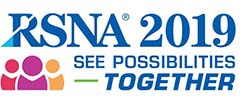

ParticipantsMelissa A. Davis, MD, Atlanta, GA (Presenter) Advisor, Nines AI
Balaji Rao, MBBS, FRCR, New Haven, CT (Abstract Co-Author) Nothing to Disclose
Paul Cedeno, MD, New Haven, CT (Abstract Co-Author) Nothing to Disclose
Atin Saha, MD, New Haven, CT (Abstract Co-Author) Nothing to Disclose
Vahe M. Zohrabian, MD, Norwalk, CT (Abstract Co-Author) Nothing to Disclose
melissa.a.davis@yale.edu
CONCLUSIONIncreases in patient volume have been accompanied by increases in ED and inpatient imaging volume, which have led to higher demands for shorter report TAT in an effort to streamline throughput and decrease healthcare expenditures. Integrating a ML software tool in the radiologist workflow allows for more rapid diagnosis and reporting of acute pathologies, which can enhance triage of patients to the appropriate level of care.
BackgroundFrom order scheduling to report generation, ML is slowly revolutionizing radiology work processes. Demonstrating how algorithms ultimately add value and improve patient outcomes remains of importance. Here, we determine the impact on throughput of a ML platform in cases of acute intracranial hemorrhage (ICH) by non-contrast head CT at a large, busy tertiary care center. We hypothesize that utilization of ML software trained to detect ICH leads to a reduction in report turnaround time (TAT) and length of stay (LOS) in both ED and in-patient populations.
EvaluationA ML platform based on a convolutional neural network model was incorporated across CT scanners at 2 imaging sites in January 2018. Report TAT and LOS were derived for reports and patients, respectively, between July 2017 and December 2017 (pre-ML) and compared to those between January 2018 and June 2018 (post-ML). 26,249 cases were evaluated in 2017 (pre-ML) and 25,544 cases in 2018 (post-ML). Report TAT decreased from 53 min to 46 min for head CT cases positive for ICH (p<.001). In-patient LOS for positive cases decreased from 9950 min to 8870 min (p>.05). ED LOS decreased from 567 min to 508 min (p<.001).
DiscussionThe rapid detection of ICH in patients with acute neurological symptoms is critical and delays in diagnosis are costly. Here, we demonstrate that adoption of a ML software platform was associated with a statistically significant decrease in report TAT for cases positive for ICH as a function of the software prioritizing those scans for radiologist interpretation. The implementation of a ML platform was also associated with a statistically significant decrease in LOS for ED patients, but not for inpatients, presumably as those patients with ICH were expeditiously transferred out of the ED.